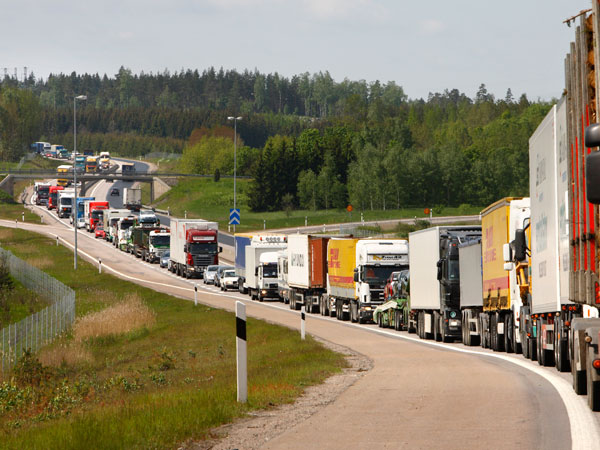Shifting freight transports from road to rail and water can contribute to achieving the Swedish environmental and climate objectives by 2030. How this could be done is something that researchers from VTI and Gothenburg University are investigating within the three-year project Mosel, which stands for Modal Shift for an Environmental Lift.
The project manager Inge Vierth sees one important prerequisite for a successful shift between modes of transport. It requires a decisiveness on the part of leading decision-makers within the companies that procure freight transport or conduct such operations under their own management. This in turn requires effective transhipments between the modes at terminals and ports.
Under these premises, transports by rail and sea can increase their share at the expense of road transport. The reliability and speed of transports are also crucial, which can be improved to some extent by means of expanded infrastructure.

Shifting freight transports from road to rail and water can contribute to achieving the Swedish environmental and climate objectives by 2030.
Photo: Hejdlösa Bilder
Policy instrument compilation within the Mosel project
Long transports are defined as transports over 300 km, and these are the distances where it may be interesting to shift freight from road to rail and waterborne transports. The Mosel project has compiled about 200 different policy instruments within Europe that are relevant for achieving such a modal shift, but there are relatively few ex ante and ex post evaluations. Nor can all these policy instruments be transferred to Sweden.
“There’s a lot that is different in Sweden compared to mainland Europe due to the long transport distances, about 60% of the domestic road transports in Sweden are over 300 km. Compared to other countries, rail accounts for a relatively high share of the transports, partly because of the long transport distances and the fact that heavy goods such as iron ore and steel are transported. At the same time, parts of the railway network are congested, while the long coastline is less crowded,” says Inge Vierth.
Different logistic systems need efficient concepts
The freight transport sector looks very different in its different sections. The state owned transport company Green Cargo offers rail transports, the paper producing company SCA partly uses its own vessels and many forwarders have their own trucks. There are about 20 large companies with their own logistics systems, and their decision is crucial for how the transports take place. Large forwarders that coordinate several customers’ transports also play a central role.
Coop, Systembolaget (state owned monopoly selling alcohol) and Ikea are close to the end consumer and have therefore been able to go ahead with the shift of freight to rail and have been quite successful in doing so. In the long term, a shift to rail and sea can be cheaper than road transports, but it can take time to put together efficient concepts. When an initiative proves to be effective, others will follow, for example chains like Lidl, Axfood and Ica.
Transhipments can be susceptible to problems, which makes door to door truck transports less risky compared to transport chains that comprise rail and/or sea links. Large volumes are also needed to make use of rail and sea transport solutions.
Who takes the initiative?
Rail and sea transport are more attractive for goods that do not need to arrive within strict deadlines. One way may be to differentiate the prices by offering the customers lower rates for slower transports. The question is who takes the initiative. Sometimes, shippers and forwarders seem to be waiting for each other, according to Inge Vierth.
Mosel is one of six research projects for sustainable transport that are funded by the Swedish Environmental Protection Agency. The project runs from 2018 to 2020. Mosel is a collaboration between VTI and the University of Gothenburg.
 Contact:
Contact:
Inge Vierth
inge.vierth@vti.se
VTI, Sweden






Follow us: